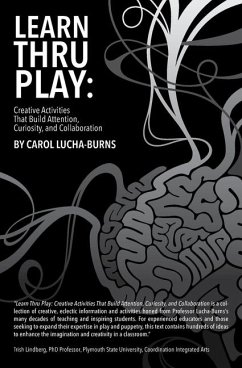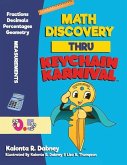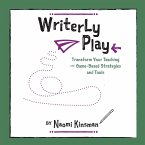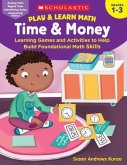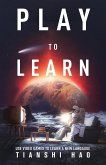Carol Lucha-Burns, retired University of New Hampshire Professor, who lived with ADHD her entire life, opens doors for educators, parents, students, homeschoolers, and anyone interested in adding to their academic toolbox in Learn Thru Play: Creative Activities That Build Attention, Curiosity, and Collaboration. This handbook of ideas, games, and plays, which includes directions for implementation, helps promote classrooms where students actively participate in their learning process. It helps them become more focused as they unleash their creativity and become involved and attentive members of a collaborative classroom. This text is an easy-to-understand compilation of games, simple puppetry, and original play scripts that helps promote a classroom where students actively engage in their learning process. Participants become more focused as they unleash their creativity, becoming involved and attentive members of the class. Lucha-Burns developed these material from her expertise in creating university classes in Education Through Dramatization, Puppetry, Story Theatre, Involvement Dramatics, and Methods of Education Through Dramatization. Cecilia Dintino: Assistant Clinical Professor of Psychology Columbia University Medical Center. Adjunct Faculty of the Graduate Program in Drama Therapy at New York University says: "The relationship between play and learning is best seen and grasped in the context of children. How do children learn? They play. They create, they imagine, and they pretend. Implementing the arts into any curriculum can enhance a child's attention, engagement, and curiosity. "What does it mean to learn? How best can one foster a learning experience? These questions have been considered and re-considered for decades. Some educators, such as Carol Lucha-Burns, have explored answers to these questions and can provide guidelines for the rest of us who aim to teach or foster development in children. "Developmental Psychologist Alison Gopnick of the University of California, Berkeley, has done numerous studies examining how children learn best. Her findings indicate that playful exploration and interaction with materials, as well as with others, breeds creative problem-solving, discovery, and long-term retention of information. In addition, the mere act of pretending appears to promote focus, perseverance, and follow-through on tasks. "Dr. Charles Limb of Johns Hopkins University shows us how creative improvisation heightens brain activity, as demonstrated by his FMRI studies. He explains how his research on improvisation and spontaneity proves that creative impulses stimulate cognitive growth more than memorized or rote learning. It's the art of discovery that teaches best; the process vs the product that yields the juiciest fruit. "Psychologist Carol Dweck's mindset studies depict two types of thinking, fixed and growth. A child with a fixed mindset is more concerned with looking smart and getting it right, whereas a child with a growth mindset is interested in the process, has a desire to learn, and is willing to participate in an exploration without the fear of making mistakes. Dweck suggests that a growth mindset is a "passport to new adventures," a lifetime of curiosity. "We could all use inspiration, guidance, and a blueprint for including the arts in the learning process. Carol Lucha-Burns' book offers just this. Tried and true exercises that include art, music, puppetry, story, and drama for all subjects and all classrooms. "If we can make learning an act of play that stimulates curiosity and incorporates the whole child - body, mind, and spirit - we will have a better chance of capturing the child's attention and commitment to the process of discovery. Along with grades and standardized testing scores, each child deserves opportunities to learn in ways that involve them in enthusiastic, creative play with enthusiastic others."
Hinweis: Dieser Artikel kann nur an eine deutsche Lieferadresse ausgeliefert werden.
Hinweis: Dieser Artikel kann nur an eine deutsche Lieferadresse ausgeliefert werden.

